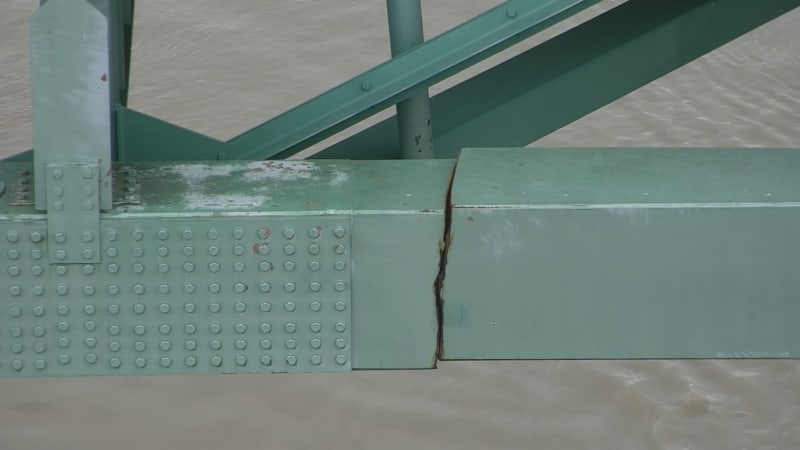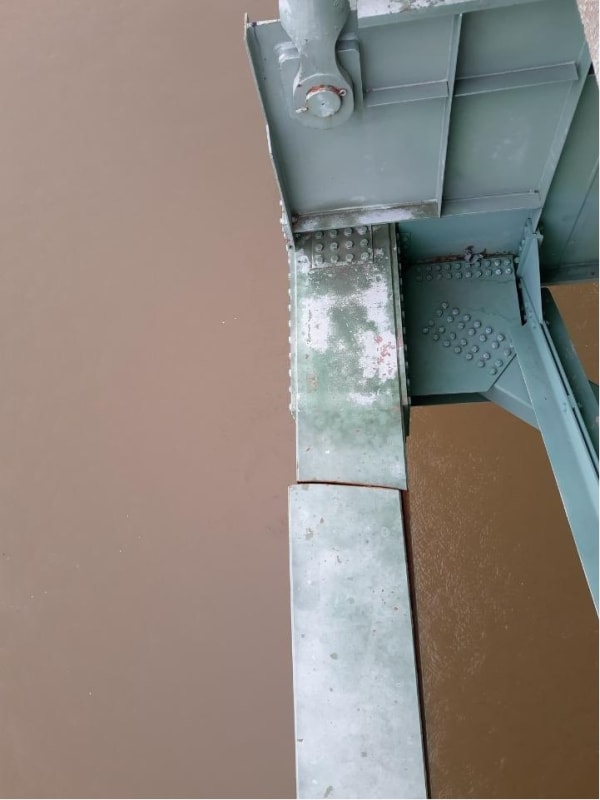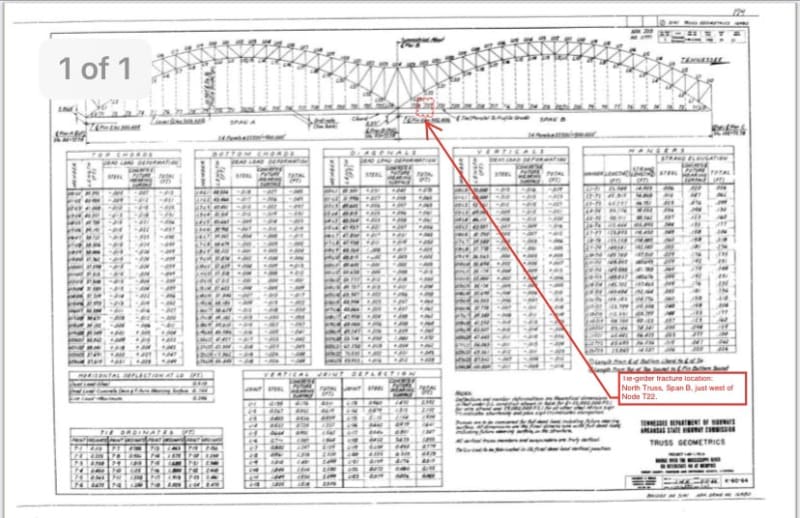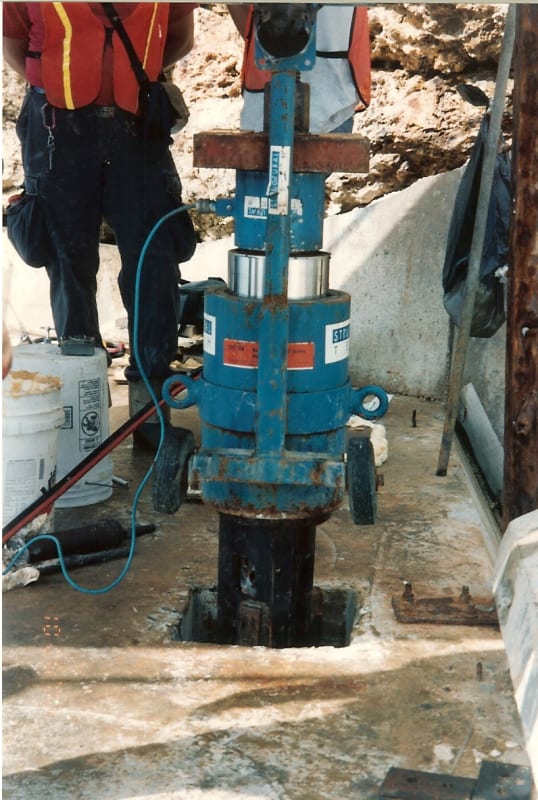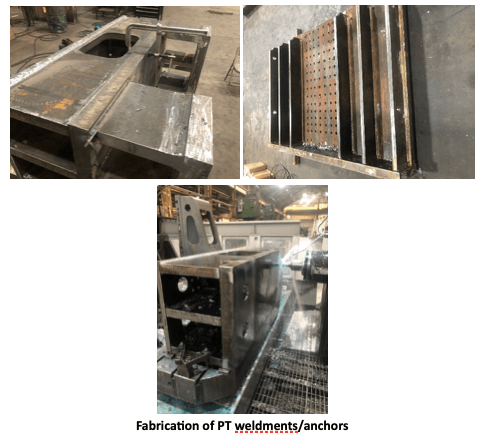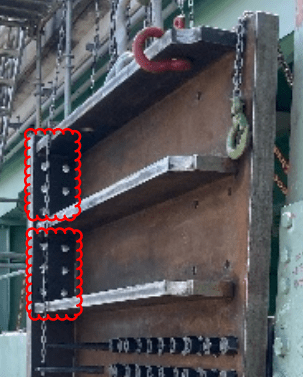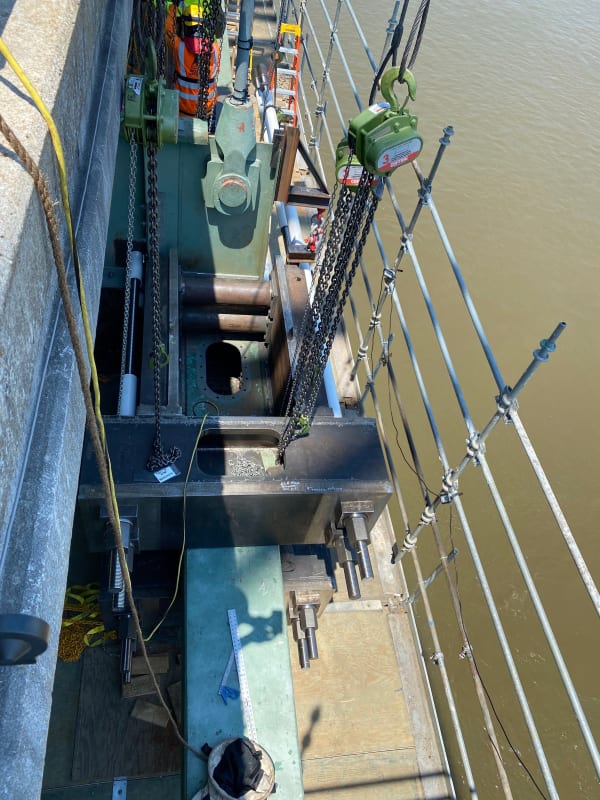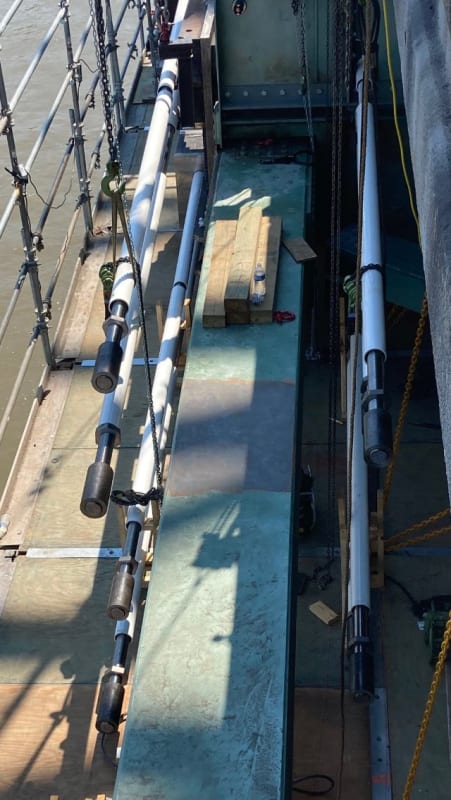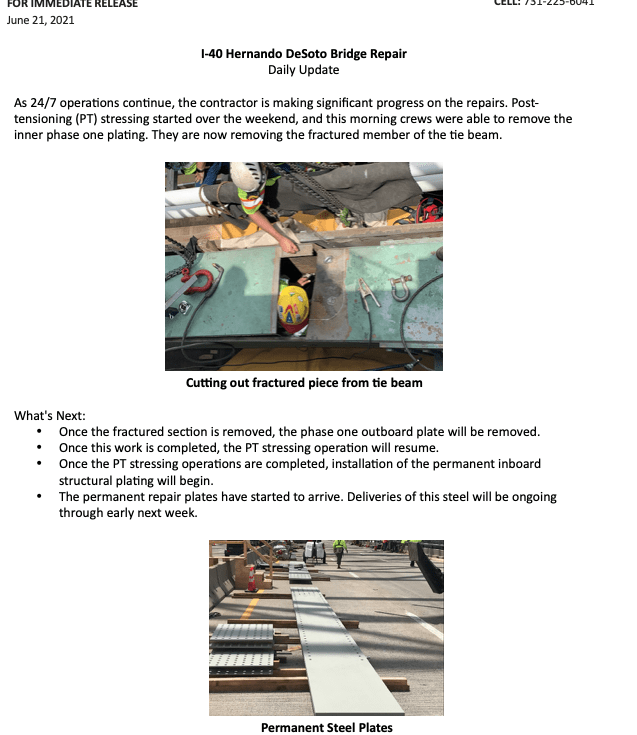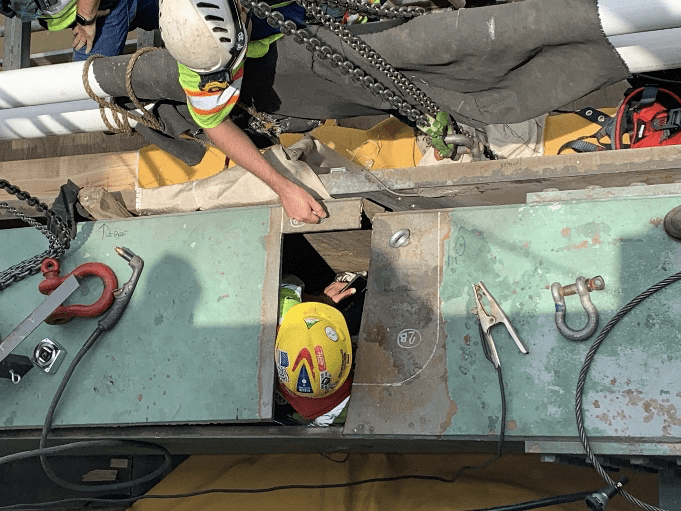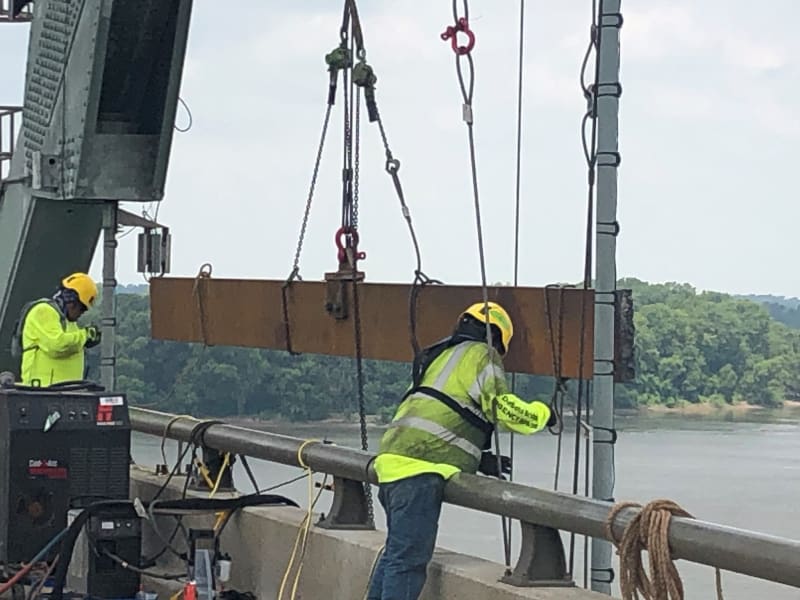Lots of updates today!
From
Link:
Here's the latest on materials/fabrication:
[ul]
[li]3,000 bolts for the post-tensioning (PT) arrived Wednesday. Crews are replacing old with the new one by one.[/li]
[li]The PT weldments/anchors, fabricated by G&G Steel out of Russellville, AL, will be delivered this weekend.[/li]
[li]The PT rods are being fabricated. The first shipment is expected Monday, 6/14.[/li]
[li]Steel strengthening plates and splice plates for the permanent repair are also being fabricated. No timeline yet for delivery.[/li]
[/ul]
Construction work expected through the weekend:
[ul]
[li]Hang additional rigging for Phase II work[/li]
[li]Finish miscellaneous steel removal for PT and Phase II work[/li]
[li]Attachment of PT anchors/weldments to the tie-beam[/li]
[li]Hang PT rod supports from floor beams in preparation for PT rod delivery on Monday[/li]
[li]Install Lower PT supports and protection on the platform[/li]
[li]Cut holes in floor beams for PT rods[/li]
[li]Remove and replace stiffeners at floor beams[/li]
[/ul]
